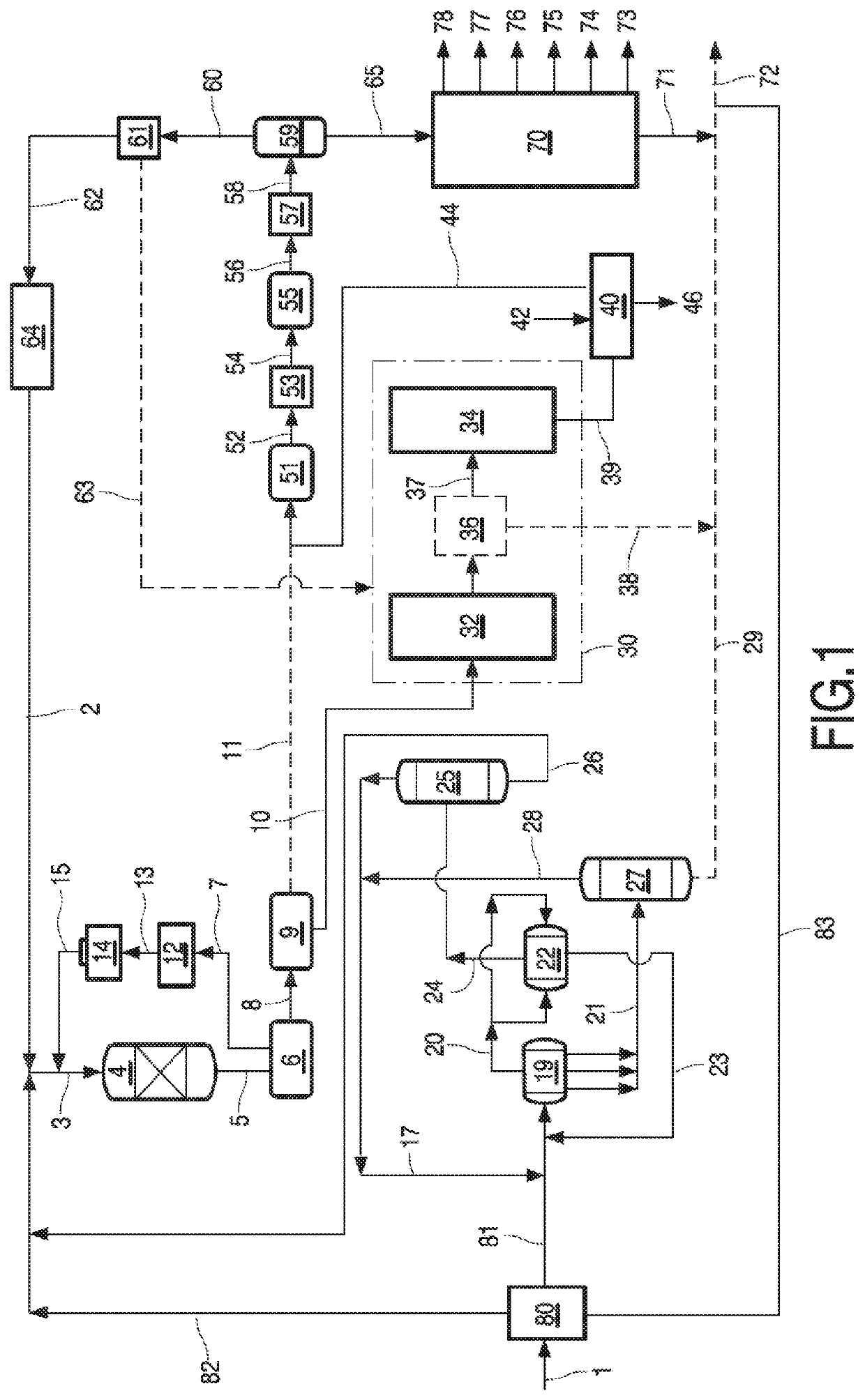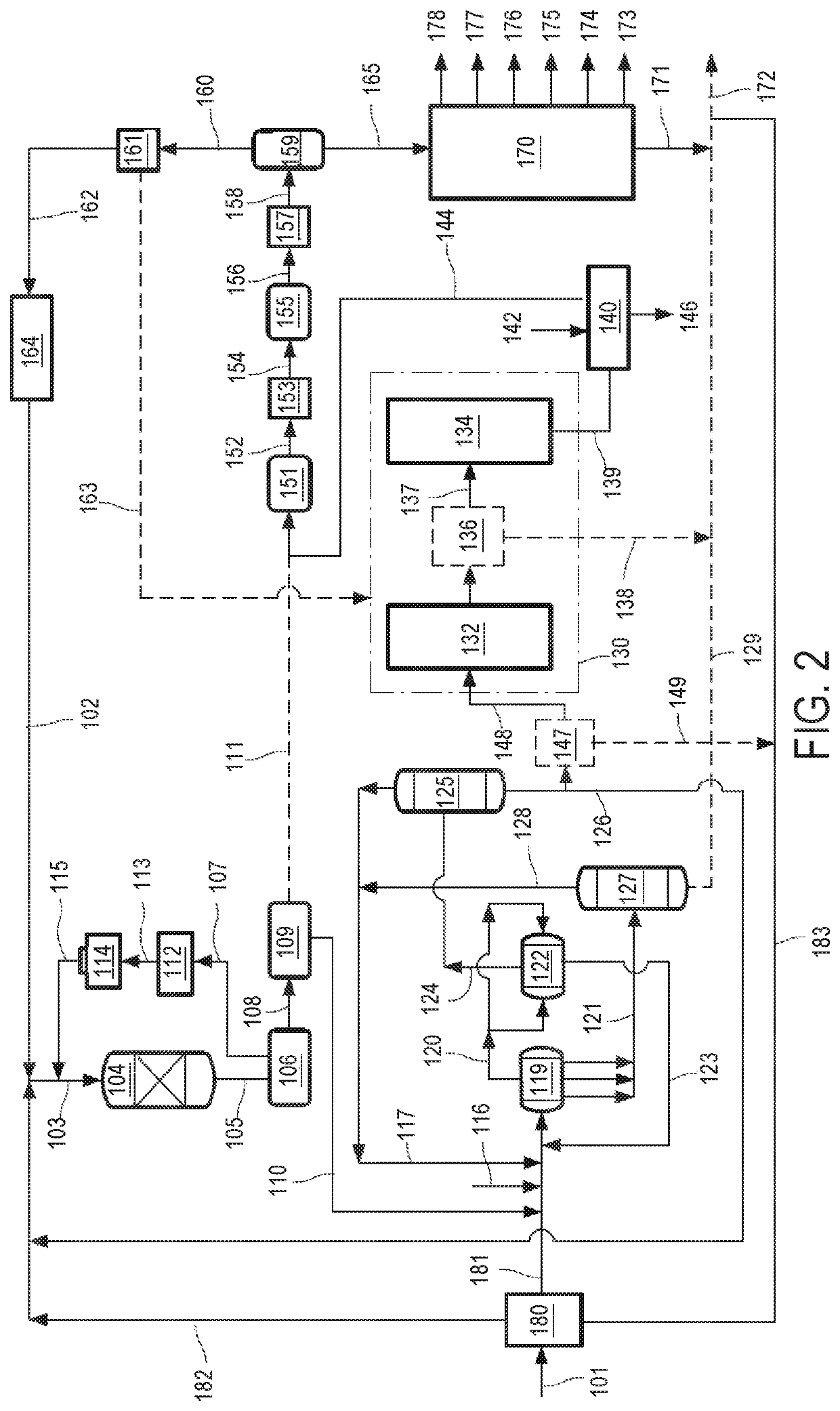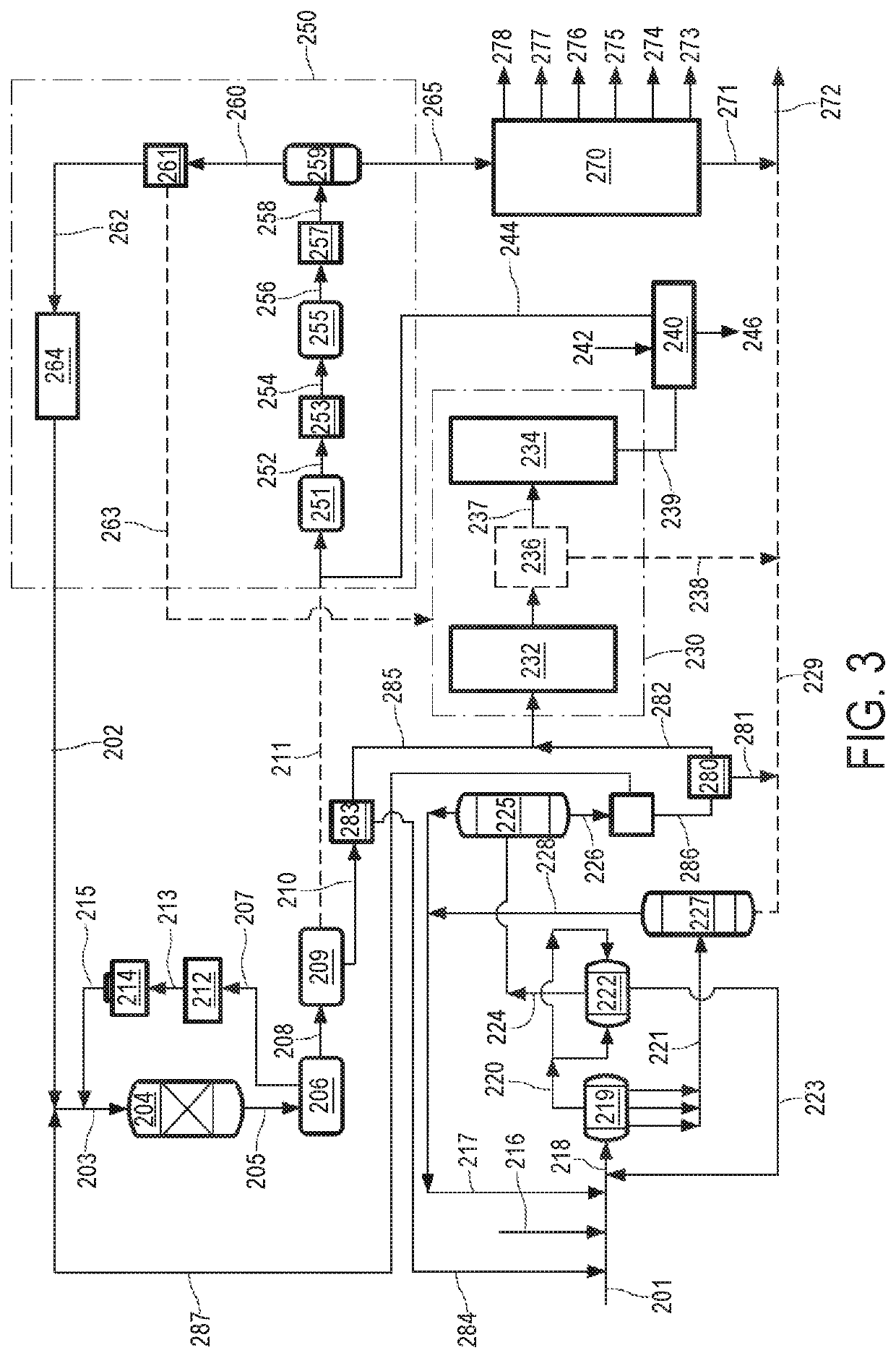Process for the preparation of a feedstock for a hydroprocessing unit and an integrated hydrotreating and steam pyrolysis process for the direct processing of a crude oil to produce olefinic and aromatic petrochemicals
a hydroprocessing unit and hydrotreating technology, applied in the field of hydroprocessing unit feedstock preparation, can solve the problems of shortening the operational life of the catalyst and the running period of the plant, sulphur can be refractory, and oil is becoming heavier and wors
- Summary
- Abstract
- Description
- Claims
- Application Information
AI Technical Summary
Benefits of technology
Problems solved by technology
Method used
Image
Examples
embodiment 1
[0042]The present integrated process of embodiment 1 described above preferably further comprises a step of separating the hydroprocessing zone reactor effluents in a high pressure separator to recover a gas portion that is cleaned and recycled to the hydroprocessing zone as an additional source of hydrogen, and a liquid portion, and separating the liquid portion from the high pressure separator in a low pressure separator into a gas portion and a liquid portion, wherein the liquid portion from the low pressure separator is the hydroprocessed effluent subjected to thermal cracking and the gas portion from the low pressure separator is combined with the mixed product stream after the steam pyrolysis zone and before separation in step (d1). According to a preferred embodiment of the present method the thermal cracking step comprises heating hydroprocessed effluent in a convection section of a steam pyrolysis zone, separating the heated hydroprocessed effluent into a vapor fraction and...
embodiment 9
[0069]Another embodiment of the invention is shown with reference to embodiment 9 described above and with reference to FIG. 2. In the process of the present invention, the first solvent deasphalting zone allows to remove certain asphaltenes, metals and carbon residues from the heavy components with a relative high yield of first deasphalted and demetallized oil, but at the expense of a certain level of contamination. The subsequently produced hydroprocessed effluent is then processed in the second solvent deasphalting zone to remove the remaining asphaltenes, metals and carbon residues so that these are not subjected to thermal cracking. In one embodiment, the solvent used in the first solvent deasphalting zone is different than the solvent used in the second solvent deasphalting zone. Preferably, the solvent used in the first solvent deasphalting zone is pentane and the solvent used in the second solvent deasphalting zone is propane or butane. According to this preferred embodimen...
embodiment 17
[0099]In the process of the present invention as described in embodiment 17 and shown in FIG. 3, the first solvent deasphalting zone allows to remove certain asphaltenes, metals and carbon residues from the heavy components with a relative high yield of first deasphalted and demetallized oil, but at the expense of a certain level of contamination. The subsequently produced hydroprocessed effluent is then processed in the second solvent deasphalting zone to remove the remaining asphaltenes, metals and carbon residues so that these are not subjected to thermal cracking. In one embodiment, the solvent used in the first solvent deasphalting zone is different than the solvent used in the second solvent deasphalting zone. Preferably, the solvent used in the first solvent deasphalting zone is pentane and the solvent used in the second solvent deasphalting zone is propane or butane. This integrated process further comprises separating the deasphalted and demetallized oil stream in a separat...
PUM
| Property | Measurement | Unit |
|---|---|---|
| pressure | aaaaa | aaaaa |
| temperature | aaaaa | aaaaa |
| pressure | aaaaa | aaaaa |
Abstract
Description
Claims
Application Information
 Login to View More
Login to View More - R&D
- Intellectual Property
- Life Sciences
- Materials
- Tech Scout
- Unparalleled Data Quality
- Higher Quality Content
- 60% Fewer Hallucinations
Browse by: Latest US Patents, China's latest patents, Technical Efficacy Thesaurus, Application Domain, Technology Topic, Popular Technical Reports.
© 2025 PatSnap. All rights reserved.Legal|Privacy policy|Modern Slavery Act Transparency Statement|Sitemap|About US| Contact US: help@patsnap.com



